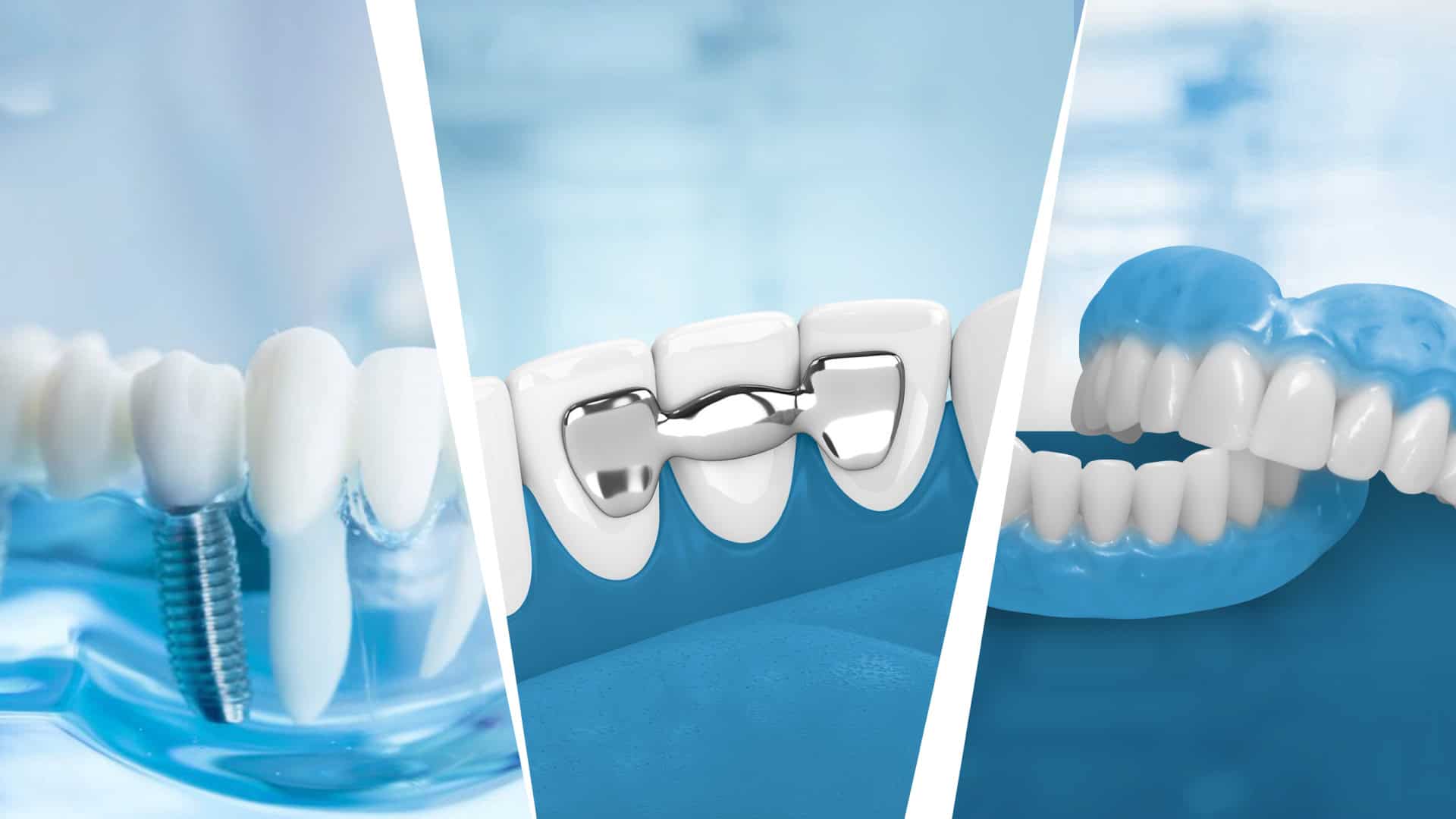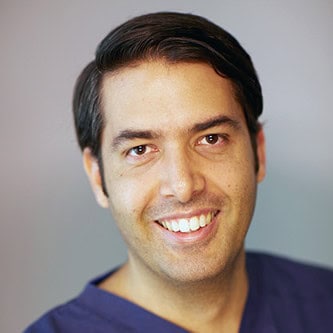Dental Implants vs. Bridges vs. Dentures: Which is Best for You?
Sep 27, 2024

Picture this: a row of glistening white piano keys with a few of them missing. How do you think it would feel to play a Sonata on such a piano? It’s going to be a frustrating ordeal, as the pianist will struggle to hit specific notes, making the artistic piece he’s playing sound unpleasing. All of that without mentioning how the piano would look. Personally, I believe having a missing tooth in your mouth feels the same as having missing piano keys during a performance.
Now, what if I told you that tooth loss is common among patients aged 35 and older? In fact, some studies even show that more than half of adults between the ages of 35 and 44 lose at least a single tooth. I do not intend to scare you with these statistics, but other than being obligated, informing you of this could encourage you to change your habits and save your precious whites.
In case you do end up losing a tooth, worry not. With today’s technological advancements and modern dentistry practices, replacing a lost tooth has become easier than ever. In this blog post, we’ll explore dental treatments, such as dental implants, bridges, or dentures, which provide a long-term solution for this issue. Through these surgical and non-surgical dental procedures, oral surgeons can bring back functionality as well as aesthetics, preserving your healthy teeth when one or more of them are lost.
Why Do I Need Dental Prosthetics?

1- Function
Besides the fact that you will have difficulty chewing food properly, having lost teeth can also compromise speaking clearly. Some teeth support your tongue in producing the correct sounds to speak correctly. This sudden change in the oral cavity can result in you experiencing altered phonetics.
2- Aesthetics
Lost teeth can create unsightly gaps, and you’ll probably be looking for a solution that offers a natural appearance since this won’t only impact your overall looks but can also bring down your confidence. The core issue is not limited to when you’re smiling or talking; it can also affect your appearance at rest. Teeth support a big part of your facial structure, and losing some can alter this structure significantly, causing what is referred to as facial sagging. This can cause your look to change, especially around the mouth, as there is nothing to hold your skin in place.
3- Oral Health
Leaving such gaps open and untreated allows harmful bacteria to grow and accumulate. This can eventually lead to gum disease, infections, and other dental problems. The situation can quickly deteriorate and could easily affect your jawbone health. If you reach the bone loss level, you will start losing more teeth, and your issue will only grow larger from there.
What Are My Tooth Replacement Options?

While they differ in name, all three treatment options solve the same issue: substituting natural teeth with prosthetic ones. While you might consider it a totally personal preference, choosing the correct procedure for you is a bit more complex. Each one of the three has specific uses and can be applied in particular conditions to patients with specific health standards. So, what are the differences between the three, and in which situation is each implemented?
1- Dental Implants
Dental implants are artificial tooth roots that replace your natural teeth’s roots. An oral surgery is needed to insert these artificial roots within your jawbone in order to hold crowns or dentures on top. During this operation, your gum tissue is cut open after the area is numbed with anesthesia. After making a small incision in the gum, the surgeon drills a hole in the jawbone where the implant must be placed. The implant, which is a titanium post shaped like a screw, is carefully inserted into the prepared site. The gum tissue is then stitched back together, allowing the top part of the implant to protrude.
The patient then requires a healing process called osseointegration. During this period, which takes up to three months, the implant fuses with the surrounding bone tissue, making it solid and durable enough for dental fittings to be installed on top. The upper showing part of the implant is then used to hold either crowns or dentures. Dental implants can be adapted to replace one, a few, or even an entire arch of teeth.
2- Dental Bridges
Dental bridges use an entirely different approach for restoring lost teeth. Bridges mainly take advantage of the gap’s surroundings and get firmly fixed to the neighboring teeth called (adjacent teeth). For example, a dental bridge that replaces one missing tooth is made of one artificial tooth called the pontic. This pontic is supported by one or two dental crowns on its side, depending on the location of the gap.
These crowns are then fixed on top of the adjacent teeth, which are now referred to as abutment teeth. With the false tooth in the middle, bridging the gap between them, hence the name. This dental procedure provides a durable, non-surgical fixation for your new tooth, restoring function and looks.
3- Dentures
Dentures are removable prosthetic teeth fixed on top of a base, usually made of resin. This base is made using special molds to fit the gums perfectly, providing a comfortable feeling for the patient. Dentures differ from the two previous methods, offering a cheaper option, although not as durable. Unlike dental bridges, removable dentures do not rely on adjacent teeth or any natural teeth at all. With partial and complete dentures available, they are the most popular option for solving tooth loss due to their long history of usage and effectiveness.
Since more durable methods were developed, we have noticed some decline in popularity over the last two decades. Overall, dentures are a considerable solution when the patient is not looking for the most durable solution.
Comparing the Three: Which Fits You the Most?

The following matter should be completely discussed with your own dentist, but I will be giving you a general idea of what to expect so you can form a better understanding and make an informed decision.
Are Implants Right for Me?
A dental implant is an effective solution that offers the most natural look and feel among the mentioned options. With its long-lasting results, we can confidently say that this procedure is the best of the three options available if you are a suitable candidate.
Since it requires surgical procedures, some patients with specific medical conditions, such as those who suffer from chronic diseases, may not be suitable for such a treatment. This can include patients with severe bone loss that can not be dealt with using bone grafting. Other than that, the cost of implants is considered the highest among the three, and some might find it over their designated budget.
And What About Dental Bridges?
Dental bridges come right behind implants on our list. Being more affordable than implants, dental bridges are widely used thanks to their high durability. Since it is not a surgical procedure, it requires fewer visits to get done with the entire process. On the other hand, strong teeth are required to support the bridge, so it might not be as helpful if the patient has weakened teeth.
Dental bridges also require more attention than implants do. Since they are not as durable, the patient must look after his diet and avoid tough foods. Additionally, bridges require more frequent regular maintenance with dental professionals as, in some cases, the bridge can loosen or shift over time.
How About Dentures?
Dentures offer the least natural feeling among the three while coming at a meager price. While they can be implemented to replace multiple real teeth, they may cause discomfort. In some cases, even partial dentures can affect your ability to speak or eat. They also require more attention and proper care than other available solutions. Regular cleaning and maintenance are considered crucial to preserve them for long periods of time.
Making Up Your Mind

While a radiant smile is pleasing, optimal dental health is what you should be aiming for. That is why we have made it our top priority for you to have the best oral health out there. Since it’s very likely that someone will lose a tooth or more within their lifetime, we wanted to support you with all the information we have regarding this. I have personally written this thorough guide to the three most common types of dental prosthetic devices that aid your efforts in having the best oral health for years to come.

Dr. Nabil Mockbil, DDS, BDS
Dr. Nabil Mockbil is the head of Swedish Dental Clinic and one of the most experienced orthodontists in Dubai. By demonstrating incredible skills and embracing a kind attitude, he's proven to be not just a brilliant dentist, but someone you can fully trust with your smile. With 20+ years of experience under his belt and a warm smile on his face, you're search for the best orthodontist in Dubai ends with him.




